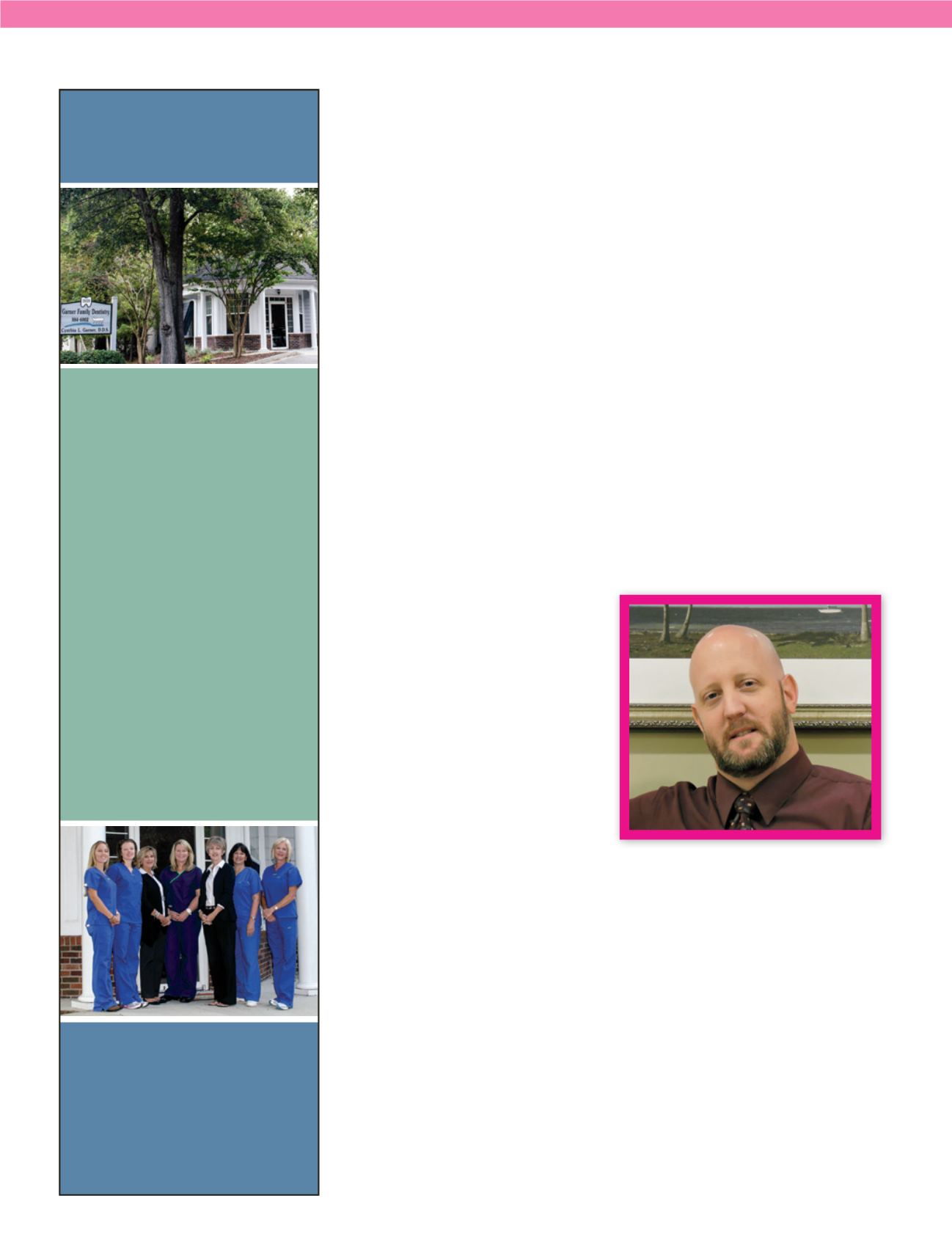
 www.MountPleasantPhysicians.com
www.MountPleasantPhysicians.com
|
www.CharlestonPhysicians.com|
www.MountPleasantPhysicians.com82
C
all them
“the girls,” “the
ta-tas,” “boobies”
or one of the
many other
less delicate
nicknames, but
our breasts are important to us. When
we’re young, we can’t wait to wear our
first bra. When we’re adults, we spend
a lifetime worrying about the specter of
breast disease.
Some women have clear reason
to wonder if breast cancer will
come calling because it has already
been handed down through the
generations. Those with the mutation
in the BRCA1 or BRCA2 gene
have an increased risk and must be
extra vigilant. The family history is
important, particularly if two or three
generations have been diagnosed with
a form of breast cancer. Genetic testing
now gives a hint into the future, but it
is up to each individual (women and
men can both inherit this mutation)
to decide whether to know. For some,
knowing that the mutation is lurking
inside is empowering. Angelina
Jolie famously underwent a double
mastectomy for just this reason.
Only about 12 percent of women
will be diagnosed with breast cancer,
but that statistic becomes meaningless
if you’re among that exclusive group.
That said, you can reduce your
chances through healthy living and
preventive care. Screenings, such as
digital mammography, ultrasounds and
even monthly self-check (you do that,
right?) mean that cancer can be caught
early, when it is most treatable.
Mammograms are recommended
beginning at the age of 40 (or 45,
depending on which organization you
listen to), earlier if you know you are
at risk. That first mammogram serves
as a baseline to which subsequent
images are compared. The old
school mammograms were actually
large films that were scrutinized by
radiologists, but the digital age has
streamlined that process.
What hasn’t changed is the big
squeeze. In order to secure precise
images, each breast is flattened
horizontally and vertically by a
technologist. It isn’t the most fun you’ll
have in a day, but it beats the option
of overlooking a possible tumor. The
technology to see inside the breasts
has been around for several decades,
but it provides a two-dimensional
image at best. It’s scary to be recalled
for additional testing, but, most of
the time its because of dense tissue or
overlapping tissue.
Is there anything better on the
horizon? Keith Holley, director of
radiology at East Cooper Medical
Center, said there is.
“Tomosynthesis gives us three-
dimensional images. It is not in this
area yet, but it will be available within
a short time,” Holley said.
Holley explained that this new
technology, which has been approved
by the FDA and already is available in
some areas, provides multiple images
that make abnormalities clearer. For
the patient, tomosynthesis might
reduce the need for additional testing.
“Instead of one image, we have
many layers to view,” Holley said,
explaining that the X-ray arc moves
Garner
Fami ly Dent i stry
From preventative hygiene
services to gentle restorative
procedures, trust in 19 years
of experience.
Garner Family Dentistry, LLC
1059 Chuck Dawley Blvd.
Mt. Pleasant, SC 29464
843.884.6002
Mon-Thurs 8-5
cynthiagarnerdentistry.com• Bonding
• Cosmetic Contouring
• Crowns and Bridges
• Cosmetic Fillings
• Excessive or Uneven Gums
• Implants
• Veneers
• Zoom Whitening
• Sealants
• Extractions
• Scaling and Root Planing
• Dentures
• Cosmetic Dentistry
• Jaw/TMJ
Cynthia Garner, DDS
Keith Holley, director of radiology at East
Cooper Medical Center, is at the front line of
breast cancer diagnosis.
















